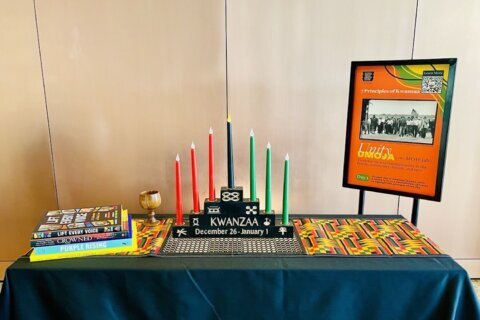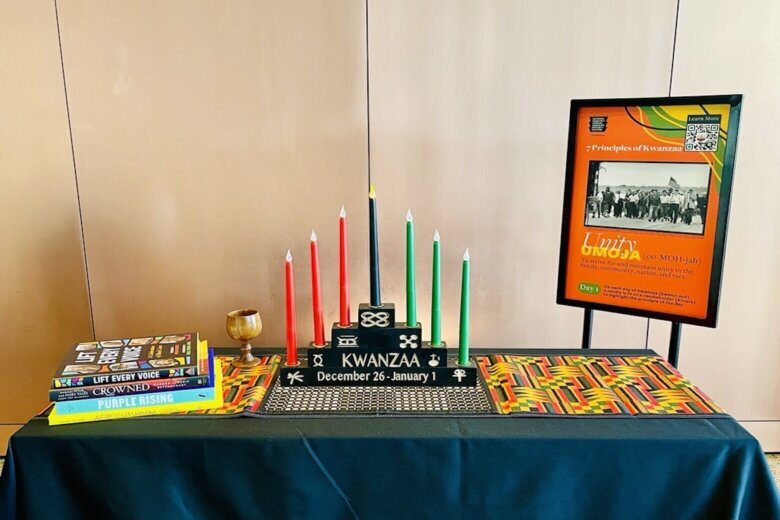
Although the Smithsonian’s National Museum of African American History and Culture in D.C. has celebrated Kwanzaa before, this is the first year that it’s having an actual display.
“It is important for people to see the actual display,” said Kelly Elaine Navies, a specialist in oral history at the museum. “I think that will sort of drive home the importance of this cultural holiday for African American people … We’re teaching the history and culture of America through an African American lens.”
The display will be in Heritage Hall and include a kinara candle holder, a mkeka mat and a Kwanzaa playlist. Although the holiday was created in 1966 specifically for African American and Pan-African cultures, Navies said anyone can celebrate with their community.
“Many of our families and our communities are intercultural, multiracial and anyone who is a part of your community and your family should be able to celebrate Kwanzaa with you,” Navies said.
“We are human families, we want to extend that. I think it’s important for anyone who’s celebrating it to understand that it was designed to emphasize the culture, and the heritage of the Pan African community of peoples of the African diaspora.”
The museum also is hosting a “Kwanzaa & Watch Night: Visions of Freedom” celebration on Dec. 30. This tradition began Dec. 31, 1862, when free and enslaved African Americans gathered to ring in the new year and await news that the Emancipation Proclamation would take effect.
“We’re pairing that with the last night of Kwanzaa, which is Kuumba going into imani which is faith,” Navies said. “So those principles that she can see work really well together. So we’ll have an event at the museum that aligns both of those particular events. And people are welcome to come and bring their children to celebrate that.”
The display will be at the museum from Dec. 26 to Jan. 1.









